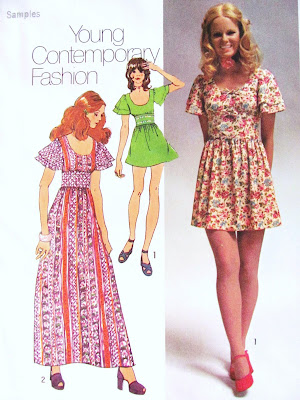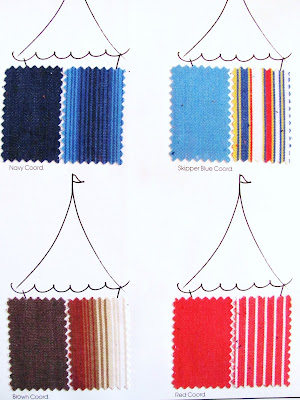



The two Simplicity patterns shown here date from Spring, 1972 and include textile swatches suggested for each pattern style.
Simplicity 9725 was part of a young looking group called "Young Contemporary Fashion". It included styles that seemed to be currently selling in the market for juniors. Fabric suggestions include 50% polyester/50% rayon blend wovens in a sheer leno stripe weave. The midriff waistline with flutter sleeves was influenced by the vintage 1930's styles popular at that time.
Simplicity 9709 is a bit more mature, from the "Designer Fashion" collection (no name mentioned in this promotional group). It was suggested for patio parties and proms. The black bodice shows up often during this era, worn over bright abstract or floral patterns. The fabrics shown here are 75% acetate/25% nylon in a textured 'terry cloth' texture on a velour knit. Bright solids are paired with very graphic prints inspired by Pucci and patchwork quilts.















